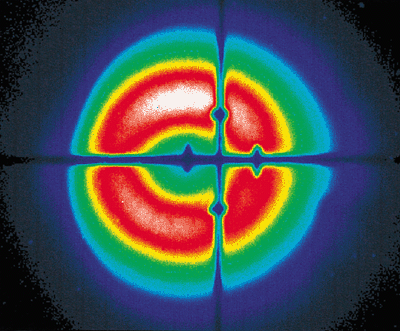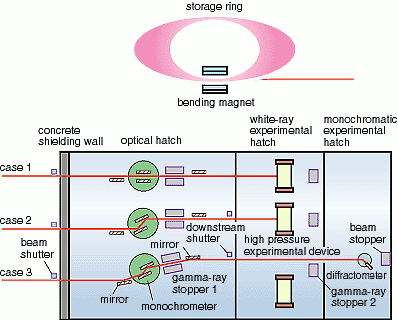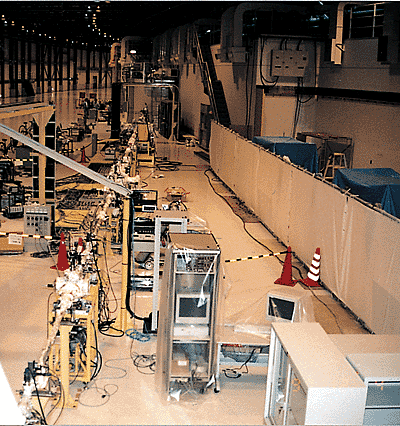Various studies of solid state physics and life sciences can be explored
with brilliant synchrotron radiation (SR) ranging from X-rays to visible
light. The research fields using X-rays are most suited to SPring-8
which has the highest electron energy in the world. Recently, two beam
lines have been completed which can guide the SR of X-rays to the experimental
area.
In the beam line for actinide science, soft X-rays of various polarized
SR such as linear-, circular-, and elliptic-polarized, can be controlled
and used with the variably polarizing undulator (an original idea of
JAERI). In this beam line after the completion of the facility handling
heavy elements of uranium and so on, wide researches such as the electronic
or magnetic structure, the chemical state of the solid surface, and
radiation effects on biologically-relevant materials can be studied.
In the beam line for material science, hard X-rays can be used over
a broad range (5-150 keV) from a bending magnet.
The beam line has recently been installed and characterized for the
broad spectrum of X-rays which are guided to the white-ray experimental
hatch and the monochromatic X-rays which are guided to the monochromatic
experimental hatch. In these hatches, various studies will be done such
as those of structural changes under an extreme environment of high
temperature and high pressure, of the structural analysis of random
materials and of the liquid/solid boundary layer.
A great number of researchers are interested in these beam lines. |


